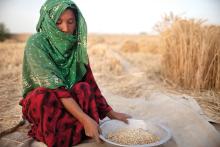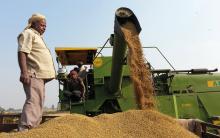Land Library Search
Through our robust search engine, you can search for any item of the over 73,000 highly curated resources in the Land Library.
If you would like to find an overview of what is possible, feel free to peruse the Search Guide.
/ library resources
Showing items 1 through 9 of 101.Land cover change impacts ecosystem function across the globe. The use of land cover data is vital in the detection of these changes over time; however, most available land cover products, such as the National Land Cover Dataset (NLCD), are produced relatively infrequently.
Crown diameter and tree density were measured in 52 communities in the Sudan-Sahel using satellite imagery to determine the relationships between rainfall and distance from community center to crown size diameter and tree density.
This philosophical paper explores the aesthetic argument for landscape conservation. The main claim is that the experience of beautiful landscapes is an essential part of the good human life. Beautiful landscapes make us feel at home in the world.
In-depth understanding about the vertical distribution of soil organic carbon (SOC) density is crucial for carbon (C) accounting, C budgeting and designing appropriate C sequestration strategies.
The objectives of this study are to: (1) evaluate accuracy of tree height measurements of manual stereo viewing on a computer display using digital aerial photographs compared with airborne LiDAR height measurements; and (2) develop an empirical model to estimate stand-level aboveground biomass w
Livestock are critical to building sustainability in food and agriculture. Current and future livestock sector development needs to produce more, from less, and in ways that benefit all.
Livestock are kept for a wide range of purposes in Africa, and there is considerable diversity in animal husbandry. Among the most important advantages in keeping animals is their contribution to maintaining and even improving soil fertility.
Tropical forage grasses and legumes as key components of sustainable crop-livestock systems in Latin America and the Caribbean have major implications for improving food security, alleviating poverty, restoring degraded lands and mitigating climate change.
The former Soviet Central Asian republics have undergone de-intensification of their livestock sectors, resulting in an increased reliance on natural pastures. Property rights systems are key to the sustainable management of this resource.





